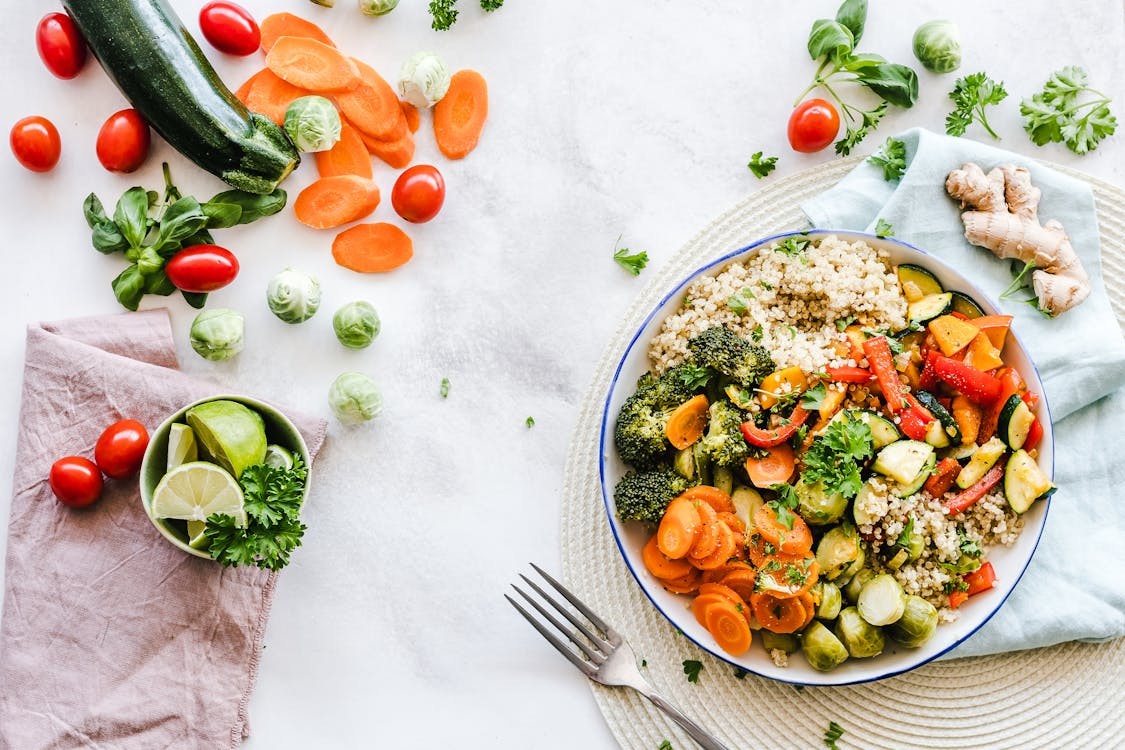What foods are savory? At FOODS.EDU.VN, we unravel the flavorful world of savory cuisine, offering you a journey beyond sweetness and into the realm of umami-rich delights. Discover delicious, balanced meals and culinary wisdom that excites the palate. Savory dishes, flavor profiles, appetizing foods, and palatable meals are just a click away.
1. Defining Savory: More Than Just Not Sweet
Savory is often defined as a taste that is not sweet. However, this definition is simplistic and doesn’t capture the full essence of what makes a food savory. Savory encompasses a range of flavors, including salty, umami, and even slightly bitter notes, creating a complex and satisfying taste experience. These flavors stimulate the appetite and can be found in various dishes worldwide. Savory flavors can be found in many cuisine types, from rustic dishes to complex plates.
The term “savory” originates from the Middle English word “savourie,” derived from “savor,” which means to taste or enjoy. This etymology highlights the pleasurable and satisfying nature of savory foods. Savory dishes play an important role in cuisines around the world.
1.1. The Five Basic Tastes and Savory’s Place
To truly understand what foods are savory, it’s helpful to consider the five basic tastes: sweet, sour, salty, bitter, and umami. Savory primarily revolves around salty and umami tastes. Umami, often described as a meaty or brothy flavor, is particularly crucial in defining savory. It enhances other flavors and adds depth to a dish.
- Sweet: Associated with sugars and often considered the opposite of savory.
- Sour: A tart, acidic taste, like that of lemons or vinegar.
- Salty: A taste produced by sodium chloride and other salts.
- Bitter: Often considered unpleasant, but can add complexity to savory dishes (e.g., dark chocolate, coffee).
- Umami: A savory taste often described as meaty or brothy.
1.2. The Role of Umami in Savory Foods
Umami is often called the fifth basic taste, and it plays a crucial role in what foods are savory. Discovered in 1908 by Japanese chemist Kikunae Ikeda, umami is the taste of glutamates, which are naturally present in many foods. Umami enhances other flavors, making dishes more complex and satisfying.
Foods rich in umami include:
- Meat: Beef, pork, and poultry
- Seafood: Fish, shellfish, and seaweed
- Vegetables: Mushrooms, tomatoes, and spinach
- Dairy: Aged cheeses like Parmesan
- Fermented Foods: Soy sauce, miso, and kimchi
2. Exploring Savory Ingredients
Many ingredients contribute to the savory nature of foods. These ingredients can be used individually or in combination to create a wide range of savory dishes. Understanding these ingredients is key to unlocking the secrets of savory cooking. You can find more savory ingredients and how to combine them at FOODS.EDU.VN.
2.1. Herbs and Spices
Herbs and spices are essential for adding depth and complexity to savory dishes. They can enhance natural flavors and introduce new dimensions to a dish’s profile.
Some popular savory herbs and spices include:
| Herb/Spice | Description | Common Uses |
|---|---|---|
| Rosemary | Piney, aromatic flavor | Roasting meats, flavoring soups and stews |
| Thyme | Earthy, slightly minty flavor | Seasoning poultry, vegetables, and sauces |
| Sage | Earthy, peppery flavor | Flavoring sausages, stuffing, and roasted vegetables |
| Oregano | Robust, slightly bitter flavor | Seasoning Italian and Mediterranean dishes, such as pizza and pasta sauces |
| Basil | Sweet, slightly peppery flavor | Flavoring Italian and Thai dishes, such as pesto and curries |
| Cumin | Warm, earthy flavor | Seasoning Mexican, Indian, and Middle Eastern dishes, such as chili and curries |
| Coriander | Citrusy, slightly sweet flavor (seeds) / soapy flavor (leaves, cilantro) | Seasoning Indian, Mexican, and Southeast Asian dishes; leaves used as a fresh garnish |
| Paprika | Sweet, smoky, or hot flavor, depending on the type | Seasoning stews, soups, and sausages; used as a garnish for color |
| Garlic Powder | Pungent, savory flavor | Seasoning meats, vegetables, and sauces |
| Onion Powder | Mild, savory flavor | Seasoning soups, stews, and rubs for meats |
| Chili Powder | Blend of chili peppers and spices; ranges from mild to very hot | Seasoning Mexican and Southwestern dishes, such as chili, tacos, and enchiladas |
| Turmeric | Earthy, slightly bitter flavor; vibrant yellow color | Seasoning Indian curries, rice dishes, and vegetable dishes; known for its anti-inflammatory properties |
| Ginger | Pungent, spicy flavor | Seasoning Asian dishes, such as stir-fries, soups, and marinades |



2.2. Vegetables
Vegetables are the backbone of many savory dishes, offering a range of flavors and textures. Some vegetables naturally lend themselves to savory preparations.
Examples of savory vegetables:
- Onions: Provide a pungent, aromatic base for many dishes.
- Garlic: Adds a strong, savory flavor.
- Tomatoes: Offer a balance of sweetness and acidity, with a rich umami flavor when cooked.
- Mushrooms: Provide an earthy, umami-rich flavor.
- Bell Peppers: Add sweetness and a slightly bitter taste, along with vibrant color.
- Eggplant: Absorbs flavors well and becomes creamy when cooked.
- Spinach: Has a mild, slightly bitter taste that complements other savory ingredients.
- Potatoes: Versatile and can be prepared in many savory ways, such as roasted, mashed, or fried.
- Root Vegetables (Carrots, Parsnips, Turnips): Offer earthy sweetness and depth of flavor when roasted or stewed.
2.3. Proteins
Proteins are essential components of savory dishes, offering rich flavors and satisfying textures. Meats, seafood, and plant-based proteins can all contribute to the savory profile of a meal.
Common savory proteins include:
- Beef: Rich, meaty flavor that is enhanced by grilling, roasting, or braising.
- Pork: Versatile and can be prepared in many savory ways, such as roasting, grilling, or curing.
- Poultry (Chicken, Turkey, Duck): Milder in flavor than beef or pork, making it a great base for savory sauces and spices.
- Fish: Offers a variety of flavors, from mild white fish to rich, oily fish like salmon.
- Shellfish (Shrimp, Crab, Lobster): Delicate, briny flavors that pair well with savory herbs and spices.
- Legumes (Beans, Lentils): Earthy, hearty flavors that are a great source of plant-based protein.
- Tofu: Bland on its own, but absorbs flavors well and can be prepared in many savory ways.
- Tempeh: Fermented soybean cake with a nutty, slightly tangy flavor.
2.4. Dairy and Cheese
Dairy products and cheeses can add creaminess, richness, and complex flavors to savory dishes. Aged cheeses, in particular, are rich in umami.
Savory dairy and cheese options:
- Aged Cheeses (Parmesan, Cheddar, Gouda): Intense, umami-rich flavors that add depth to dishes.
- Cream Cheese: Adds creaminess and tanginess to dips, spreads, and sauces.
- Sour Cream: Adds tanginess and richness to sauces, dips, and toppings.
- Yogurt: Can be used in marinades, sauces, and dips for a tangy flavor and creamy texture.
- Butter: Adds richness and flavor to sautéed vegetables, sauces, and baked goods.
- Crème Fraîche: Similar to sour cream but with a richer, slightly nutty flavor.
2.5. Fats and Oils
Fats and oils are crucial for cooking and adding flavor to savory dishes. Different fats and oils have unique flavor profiles that can enhance the overall taste of a dish.
Examples of savory fats and oils:
- Olive Oil: Fruity, slightly peppery flavor that is great for sautéing, roasting, and dressings.
- Butter: Adds richness and flavor to sautéed vegetables, sauces, and baked goods.
- Bacon Fat: Smoky, savory flavor that can be used to sauté vegetables or add depth to sauces.
- Sesame Oil: Nutty, toasty flavor that is great for Asian-inspired dishes.
- Coconut Oil: Adds a subtle coconut flavor and richness to dishes.
- Avocado Oil: Mild, slightly grassy flavor that is great for high-heat cooking and dressings.
3. Savory Dishes from Around the World
Savory cuisine spans the globe, with each culture bringing its unique ingredients and cooking techniques to the table. Exploring these dishes can broaden your culinary horizons and deepen your appreciation for savory flavors.
3.1. Italian Cuisine
Italian cuisine is renowned for its use of fresh ingredients and simple preparations that highlight natural flavors. Many classic Italian dishes feature savory combinations of tomatoes, herbs, cheeses, and meats.
Examples of savory Italian dishes:
- Pasta Aglio e Olio: Simple pasta dish with garlic, olive oil, chili flakes, and parsley.
- Pizza Margherita: Classic pizza with tomatoes, mozzarella, and basil.
- Risotto ai Funghi: Creamy rice dish with mushrooms, Parmesan cheese, and herbs.
- Osso Buco: Braised veal shanks with vegetables, wine, and broth.
- Lasagna: Layered pasta dish with meat sauce, cheese, and béchamel sauce.
3.2. French Cuisine
French cuisine is known for its complex sauces, rich flavors, and sophisticated techniques. Savory dishes often feature butter, cream, wine, and herbs.
Examples of savory French dishes:
- Soupe à l’oignon gratinée: Onion soup with caramelized onions, beef broth, and Gruyère cheese.
- Boeuf Bourguignon: Beef stew braised in red wine with mushrooms, onions, and bacon.
- Coq au Vin: Chicken braised in red wine with mushrooms, onions, and bacon.
- Quiche Lorraine: Savory custard tart with bacon, cheese, and onions.
- Ratatouille: Vegetable stew with tomatoes, eggplant, zucchini, bell peppers, and herbs.
3.3. Asian Cuisine
Asian cuisine encompasses a vast array of flavors and techniques, from the spicy curries of India to the umami-rich dishes of Japan. Savory dishes often feature soy sauce, ginger, garlic, chili peppers, and various spices.
Examples of savory Asian dishes:
- Indian Curry: Stew with meat or vegetables in a sauce made from spices, coconut milk, and yogurt.
- Japanese Ramen: Noodle soup with broth, meat, vegetables, and a boiled egg.
- Chinese Stir-Fry: Quick-cooked dish with meat, vegetables, and a savory sauce.
- Korean Kimchi Jjigae: Spicy stew with kimchi, tofu, pork, and vegetables.
- Thai Green Curry: Stew with coconut milk, green chilies, herbs, and vegetables or meat.
3.4. Mexican Cuisine
Mexican cuisine is known for its bold flavors, vibrant colors, and use of chilies, spices, and herbs. Savory dishes often feature corn, beans, avocados, and various meats.
Examples of savory Mexican dishes:
- Tacos: Corn or wheat tortillas filled with meat, vegetables, and salsa.
- Enchiladas: Corn tortillas filled with meat or cheese, covered in sauce, and baked.
- Chili con Carne: Stew with meat, beans, tomatoes, and chili peppers.
- Guacamole: Avocado dip with onions, tomatoes, cilantro, and lime juice.
- Mole Poblano: Complex sauce with chilies, chocolate, spices, and nuts.
3.5. Middle Eastern Cuisine
Middle Eastern cuisine is characterized by its use of aromatic spices, herbs, and fresh ingredients. Savory dishes often feature lamb, chicken, chickpeas, and various vegetables.
Examples of savory Middle Eastern dishes:
- Hummus: Chickpea dip with tahini, lemon juice, garlic, and olive oil.
- Falafel: Deep-fried chickpea patties served in pita bread with vegetables and tahini sauce.
- Shawarma: Thinly sliced meat (lamb, chicken, or beef) roasted on a spit and served in pita bread with vegetables and sauce.
- Kebab: Grilled meat skewers with vegetables.
- Tabbouleh: Salad with parsley, mint, tomatoes, cucumbers, bulgur wheat, and lemon dressing.
4. The Science Behind Savory Flavors
Understanding the science behind savory flavors can help you create more delicious and balanced dishes. The Maillard reaction, glutamate content, and sensory perception all play roles in our experience of savory.
4.1. The Maillard Reaction
The Maillard reaction is a chemical reaction between amino acids and reducing sugars that occurs when food is heated. This reaction is responsible for the browning and development of complex flavors in many savory foods, such as roasted meats, baked bread, and sautéed vegetables. The Maillard reaction creates hundreds of different flavor compounds, contributing to the depth and complexity of savory dishes.
4.2. Glutamate and Umami
Glutamate is an amino acid that is naturally present in many foods and is responsible for the umami taste. When glutamate binds to receptors on our tongues, it sends a signal to the brain that we perceive as savory. Foods high in glutamate include aged cheeses, mushrooms, tomatoes, and seaweed. Adding these ingredients to dishes can enhance the umami flavor and create a more satisfying taste experience.
4.3. Sensory Perception
Sensory perception plays a crucial role in how we experience savory flavors. Taste, smell, texture, and even visual appearance can all influence our perception of a dish. For example, the aroma of freshly baked bread can enhance our anticipation and enjoyment of the savory flavor. The texture of a crispy roasted chicken can add to the overall sensory experience.
5. Tips for Cooking Savory Dishes
Cooking savory dishes is an art that can be mastered with practice and a few key techniques. Experiment with different ingredients, flavors, and cooking methods to create your own unique savory creations.
5.1. Balancing Flavors
Balancing flavors is essential for creating delicious savory dishes. Consider the five basic tastes (sweet, sour, salty, bitter, and umami) and how they interact with each other. A well-balanced dish will have a harmonious combination of these flavors, creating a satisfying and complex taste experience.
- Salt: Enhances other flavors and adds depth to a dish.
- Acid: Brightens flavors and adds a tangy counterpoint to richness.
- Fat: Adds richness and carries flavors.
- Heat: Adds a spicy kick and can enhance other flavors.
- Sweet: Can balance out salty, sour, and bitter flavors.
5.2. Using Fresh Herbs and Spices
Fresh herbs and spices can add a burst of flavor and aroma to savory dishes. Use fresh herbs whenever possible, as they have a brighter, more vibrant flavor than dried herbs. When using dried herbs, be sure to use less, as their flavor is more concentrated.
- Add herbs and spices at the end of cooking: This helps to preserve their flavor and aroma.
- Toast spices before using: This enhances their flavor and aroma.
- Use a mortar and pestle to grind spices: This releases their essential oils and intensifies their flavor.
5.3. Mastering Cooking Techniques
Mastering basic cooking techniques can help you create delicious and consistent savory dishes. Some essential techniques include:
- Sautéing: Cooking food quickly in a small amount of fat over medium-high heat.
- Roasting: Cooking food in the oven at a high temperature.
- Braising: Cooking food slowly in a liquid over low heat.
- Grilling: Cooking food over an open flame.
- Stir-frying: Cooking food quickly in a wok over high heat.
5.4. Experimenting with Ingredients
Don’t be afraid to experiment with different ingredients and flavors to create your own unique savory dishes. Try combining unexpected ingredients or using a different cooking method to see what happens. The key is to have fun and be creative.
- Try different types of proteins: Beef, pork, chicken, fish, tofu, tempeh.
- Experiment with different vegetables: Onions, garlic, tomatoes, mushrooms, bell peppers, eggplant, spinach, potatoes.
- Use different herbs and spices: Rosemary, thyme, sage, oregano, basil, cumin, coriander, paprika, garlic powder, onion powder, chili powder, turmeric, ginger.
- Try different sauces and condiments: Soy sauce, hot sauce, Worcestershire sauce, mustard, ketchup.
5.5. Seasoning Properly
Seasoning is crucial for bringing out the flavors of savory dishes. Taste your food often and adjust the seasoning as needed. Salt is the most important seasoning, but don’t be afraid to use other seasonings like pepper, garlic powder, onion powder, and herbs.
- Season in layers: Add a little seasoning at each stage of cooking.
- Taste and adjust: Taste your food often and adjust the seasoning as needed.
- Don’t be afraid to experiment: Try different seasonings to see what you like.
6. Savory Snacks and Appetizers
Savory snacks and appetizers are a great way to satisfy your cravings and enjoy a burst of flavor. From dips and spreads to finger foods and small bites, there are endless possibilities for savory snacks and appetizers.
6.1. Dips and Spreads
Dips and spreads are versatile and easy to make, perfect for parties or a quick snack. Serve with crackers, vegetables, or bread.
Examples of savory dips and spreads:
- Hummus: Chickpea dip with tahini, lemon juice, garlic, and olive oil.
- Guacamole: Avocado dip with onions, tomatoes, cilantro, and lime juice.
- Spinach Artichoke Dip: Creamy dip with spinach, artichokes, cheese, and garlic.
- French Onion Dip: Dip made with caramelized onions, sour cream, and mayonnaise.
- Baba Ghanoush: Eggplant dip with tahini, lemon juice, garlic, and olive oil.
6.2. Finger Foods
Finger foods are small, bite-sized snacks that are easy to eat and perfect for parties or gatherings.
Examples of savory finger foods:
- Mini Quiches: Small savory tarts with eggs, cheese, and various fillings.
- Pigs in a Blanket: Small sausages wrapped in pastry dough.
- Bruschetta: Toasted bread topped with tomatoes, basil, garlic, and olive oil.
- Deviled Eggs: Hard-boiled eggs filled with mayonnaise, mustard, and spices.
- Cheese and Crackers: A classic combination of cheese, crackers, and fruit or olives.
6.3. Small Bites
Small bites are more elaborate snacks that can be served as appetizers or as part of a larger meal.
Examples of savory small bites:
- Sushi: Japanese dish with rice, seaweed, and various fillings, such as fish, vegetables, and eggs.
- Spring Rolls: Vietnamese dish with rice paper wrappers filled with vegetables, meat, and herbs.
- Empanadas: Latin American pastry filled with meat, cheese, or vegetables.
- Samosas: Indian pastry filled with potatoes, peas, and spices.
- Arancini: Italian rice balls filled with meat, cheese, and vegetables.
7. Savory Baking and Desserts
While desserts are typically sweet, savory elements can add complexity and depth to baked goods. Savory baking and desserts offer a unique and delicious twist on traditional sweets.
7.1. Savory Breads
Savory breads are a great alternative to sweet breads and can be served as a side dish or as part of a meal.
Examples of savory breads:
- Garlic Bread: Bread with garlic butter and herbs.
- Focaccia: Italian flatbread with olive oil, herbs, and salt.
- Cheese Bread: Bread with cheese baked into the dough.
- Olive Bread: Bread with olives baked into the dough.
- Rosemary Bread: Bread with rosemary baked into the dough.
7.2. Savory Pies and Tarts
Savory pies and tarts are a great way to showcase savory fillings and create a satisfying meal.
Examples of savory pies and tarts:
- Quiche: Savory custard tart with eggs, cheese, and various fillings.
- Shepherd’s Pie: Pie with a meat filling and a mashed potato topping.
- Chicken Pot Pie: Pie with a chicken filling and a flaky crust.
- Tomato Pie: Pie with a tomato filling and a cheese topping.
- Spinach Pie: Pie with a spinach filling and a feta cheese topping.
7.3. Desserts with Savory Elements
Adding savory elements to desserts can create a unique and complex flavor profile.
Examples of desserts with savory elements:
- Salted Caramel: Caramel with salt added to enhance the sweetness.
- Bacon Chocolate: Chocolate with bacon added for a salty, smoky flavor.
- Cheese Cake: Cheesecake with a savory crust made from crackers or pretzels.
- Olive Oil Cake: Cake with olive oil added for a moist, flavorful crumb.
- Rosemary Ice Cream: Ice cream with rosemary added for a herbal, savory flavor.
8. Health Benefits of Savory Foods
Savory foods can offer a variety of health benefits, depending on the ingredients and cooking methods used. Vegetables, lean proteins, and healthy fats are all components of a balanced savory diet.
8.1. Nutrient-Rich Ingredients
Many savory dishes are made with nutrient-rich ingredients like vegetables, lean proteins, and whole grains. These ingredients provide essential vitamins, minerals, and antioxidants that are important for overall health.
- Vegetables: Rich in vitamins, minerals, and fiber.
- Lean Proteins: Provide essential amino acids for building and repairing tissues.
- Whole Grains: Rich in fiber and complex carbohydrates.
8.2. Lower in Sugar
Compared to sweet foods, savory foods are typically lower in sugar. This can be beneficial for people who are trying to manage their blood sugar levels or reduce their intake of added sugars.
8.3. May Promote Satiety
Savory foods that are high in protein and fiber may promote satiety, helping you feel fuller for longer. This can be helpful for weight management and preventing overeating.
8.4. Versatile and Adaptable
Savory recipes can be adapted to meet a variety of dietary needs and preferences. You can easily modify recipes to be vegetarian, vegan, gluten-free, or low-sodium.
9. Trends in Savory Cuisine
Savory cuisine is constantly evolving, with new trends and techniques emerging all the time. From umami-rich dishes to savory desserts, there are many exciting developments in the world of savory cuisine.
9.1. Umami-Rich Dishes
Umami-rich dishes are becoming increasingly popular as people discover the complex and satisfying flavor of umami. Chefs are experimenting with ingredients like mushrooms, tomatoes, seaweed, and aged cheeses to create dishes that are bursting with umami flavor.
9.2. Savory Desserts
Savory desserts are a growing trend, with chefs adding savory elements like salt, herbs, and spices to traditional sweets. These unexpected combinations can create a unique and memorable dining experience.
9.3. Plant-Based Savory Options
As more people adopt plant-based diets, there is a growing demand for savory vegan and vegetarian dishes. Chefs are using innovative techniques and ingredients to create flavorful and satisfying plant-based savory options.
9.4. Global Flavors
Global flavors are influencing savory cuisine, with chefs incorporating ingredients and techniques from around the world. This is leading to a fusion of flavors and exciting new culinary creations.
9.5. Sustainable and Ethical Sourcing
Sustainable and ethical sourcing is becoming increasingly important in the culinary world. Chefs are prioritizing ingredients that are locally sourced, sustainably grown, and ethically produced.
10. Frequently Asked Questions (FAQ) About Savory Foods
Here are some frequently asked questions about savory foods:
10.1. What does savory taste like?
Savory tastes primarily revolve around salty and umami, often described as meaty or brothy. It’s a rich, satisfying flavor that is the opposite of sweet.
10.2. What are some examples of savory foods?
Examples include soups, stews, roasted meats, vegetables, and dishes flavored with herbs and spices.
10.3. Is savory the same as salty?
While saltiness is a component of savory, it’s not the only one. Umami plays a significant role, contributing a rich, meaty flavor.
10.4. What makes a dish savory?
The presence of ingredients high in umami and salt, along with the absence of significant sweetness, makes a dish savory.
10.5. Can a dessert be savory?
Yes, desserts can incorporate savory elements like salt, herbs, and spices to create unique flavor combinations.
10.6. What is the opposite of savory?
The opposite of savory is sweet.
10.7. Is cheese considered savory?
Yes, many cheeses, especially aged ones like Parmesan, are considered savory due to their high umami content.
10.8. How can I make my dish more savory?
Add ingredients rich in umami, such as mushrooms, tomatoes, soy sauce, or aged cheeses. You can also use herbs and spices like rosemary, thyme, and garlic.
10.9. What are savory spices?
Savory spices include herbs like thyme, rosemary, sage, and spices like garlic powder, onion powder, and cumin.
10.10. Is savory food healthy?
Savory food can be healthy, depending on the ingredients and cooking methods used. Dishes with vegetables, lean proteins, and healthy fats can be very nutritious.
Savory flavors offer a world of culinary exploration. From understanding the basics of umami to experimenting with global cuisines, the possibilities are endless. Ready to delve deeper into the savory universe? Visit FOODS.EDU.VN, your ultimate guide to culinary knowledge and delicious recipes.
Looking for more ways to explore savory foods and culinary techniques? FOODS.EDU.VN offers a wide range of articles, recipes, and resources to help you on your culinary journey. Whether you’re a beginner or an experienced cook, you’ll find something to inspire you. Plus, you can always reach out to us with any questions or feedback.
Contact Us:
- Address: 1946 Campus Dr, Hyde Park, NY 12538, United States
- WhatsApp: +1 845-452-9600
- Website: FOODS.EDU.VN
Start your savory adventure with foods.edu.vn today!
